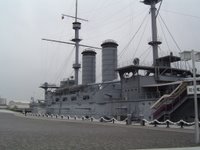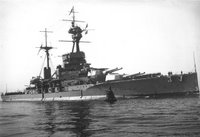battleships
In 1894, the Imperial Japanese Navy annihilated a Chinese Fleet at the Battle of Yalu. The victory helped establish Japanese power on mainland Asia, and served as an announcement to.
The dreadnoughts of the High Seas Fleet had two notable characteristics. First, they were well armored and have excellent survivability characteristics. These qualities extended to German battlecruisers, most of which.
France's early efforts at battleship construction suffered from slow building, full slips, and a concentration on the more pressing issues of World War I. Accordingly, early French battleships were not.
Lord Fisher was not content with the invention of Dreadnought, the all big gun battleship which would render the fleets of the world obsolete. The mission of the Royal Navy.
SMS Ostfriesland was the second ship of the Helgoland class, the second group of German dreadnoughts. Germany had been taken aback by the construction of HMS Dreadnought and HMS Invincible..
Szent Istvan was the only dreadnought battleship constructed by Hungary. Befitting her unique status, Szent Istvan was named after King Stephen I, the first Christian king of the Magyar people,.

Tirpitz was the final result of forty (interrupted) years of German battleship design. In construction she was very similar to her sister Bismarck, although slightly larger and with a few.
Part IPart IIPart IIIPart IVPart VBadly damanged by mines, Yavuz Sultan Selim required four months of repair work at Constantinople. Given Allied domination of the North Sea and the Mediterranean,.









